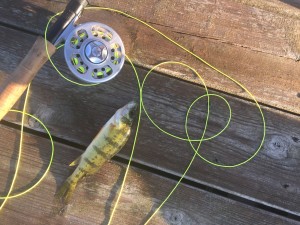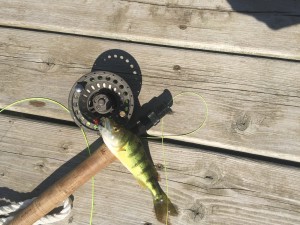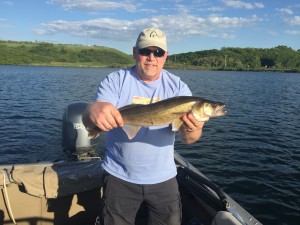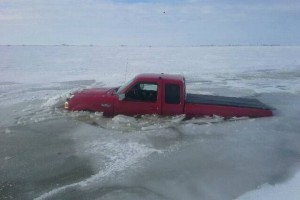A while back I posted an article about using coloured tape to turn your fishing rods into a fish ruler to easily measure fish length without having to have another hand and another piece of equipment. You can read that older article here. It was a great idea, at first, then it became a bad idea over time, but easily fixed. The idea back then was to wrap electrical tape at 3 inch intervals on the rod shaft. Quick, easy and worked well. As time passed, the sticky side of the tape lost it’s adhesion. Exposure to elements such as the UV rays of the sun, wind, rain, etc. caused the tape to begin to let go, catching the fishing line on occasion. As I peeled off pieces of loose tape, there was a stick area on the rod that interfered with the line, especially on my fly rods.
So I needed a better answer. The idea was still sound, marks on the rod shaft to allow quick measurement. Although not extremely precise, it can give you a fish measurement accurate within a half an inch without having to fumble with a ruler or a tape measure.
Keep in mind, this idea was never intended to improve the aesthetics of your fishing rods. Given the choice, I’ll pick an ugly rod that helps me catch fish vs a beautiful brochure quality shiny rod. To be honest, it did hurt a bit to mark up my fly rods, but the usability factor went up. The answer was to change my materials.
- a ruler
- white paint
- paint brush
- fine tip permanent marker
I laid the rod down on a table with a tape measure set along side. If you have the room, you can speed up the process with multiple rods by laying them down side-by-side and applying all the paint spots. With a dip of the brush in the paint can, I then dabbed on a bit of paint at 3 inch intervals, starting at 18 inches, up to 36 inches. I left that for a few hours to dry then got out the marker and carefully wrote the measurements on the paint spots.

As I got further down the rod shaft, the diameter became smaller, and the task of writing numbers such as 36 became more difficult.

Now that I have done 5 rods, a quick fish measurement happens in 5 seconds, even with the fish still in the net. I lay the net down on the back of the boat, with a section of net overlapping the fish to prevent it from jumping out, and lay the butt of the fishing rod at the fishes nose and read the length on the shaft. If you look closely at the first picture above, the first mark is at 18″ and the seventh mark is at 36″. My longest fish this year has been a 35″ Northern Pike. I am leaving the marks as I have them, hoping to fall short next season and needing to over-estimate the length of the 40 plus incher I’m going to catch. Then I will add more marks.




















